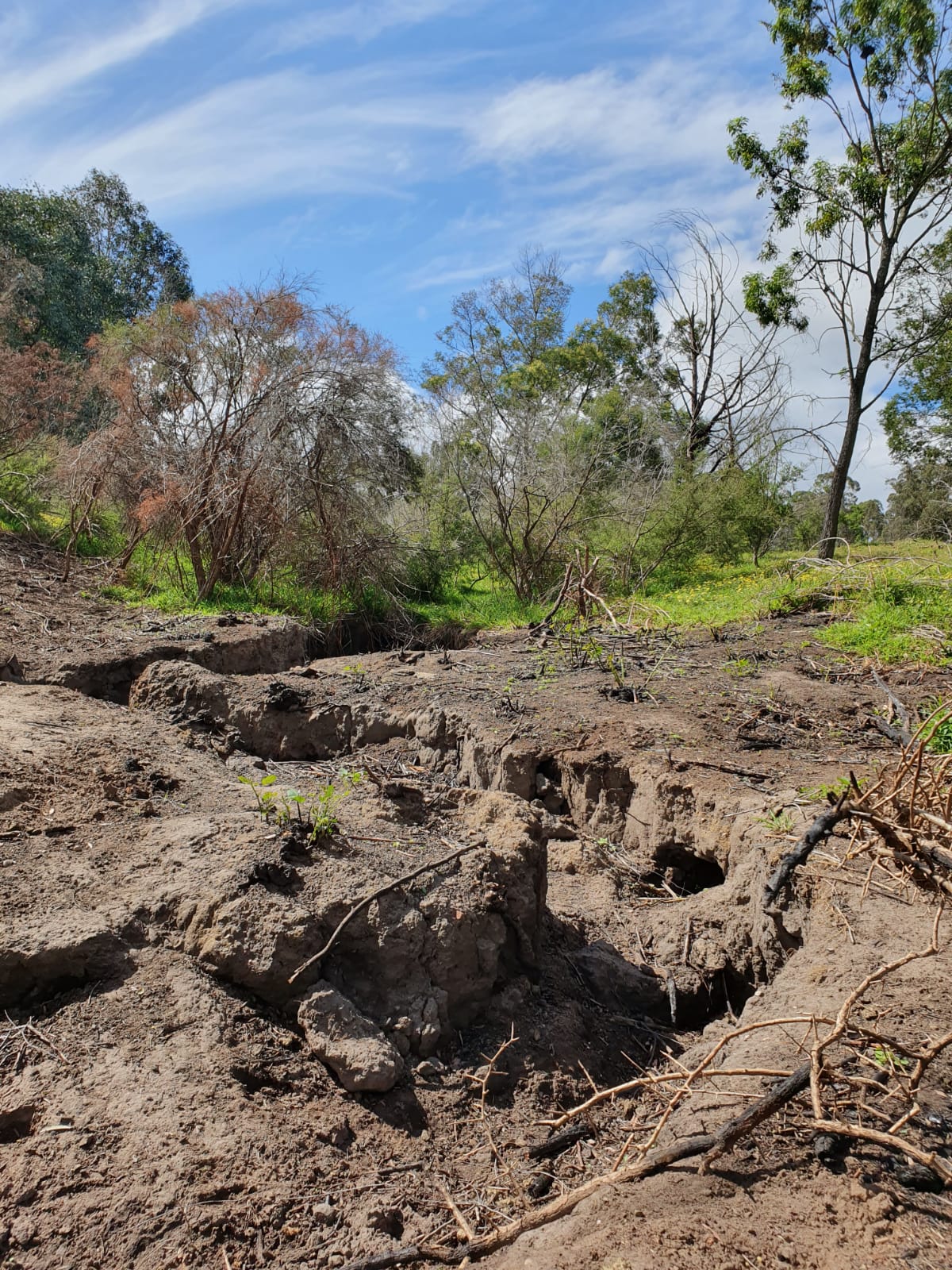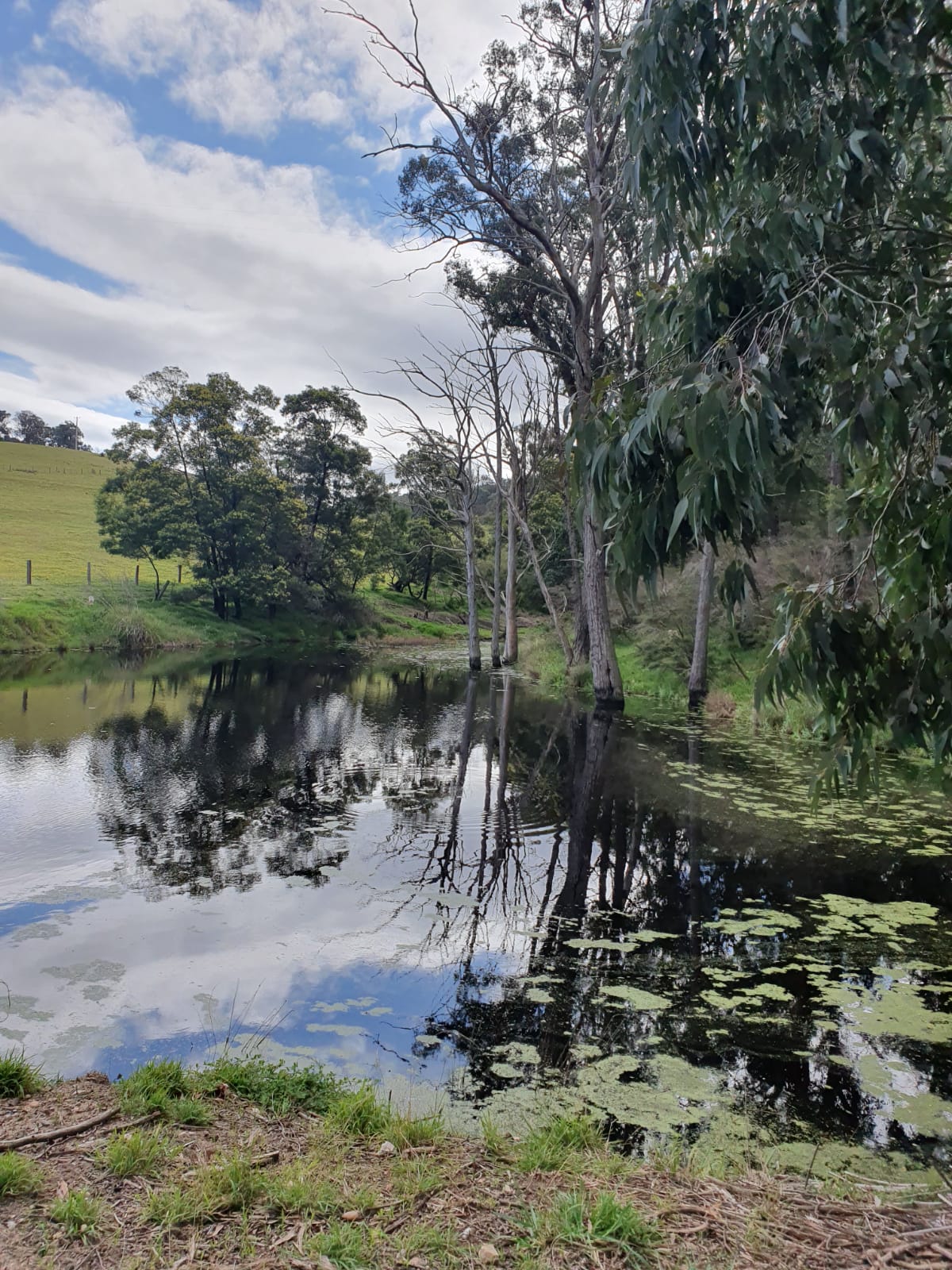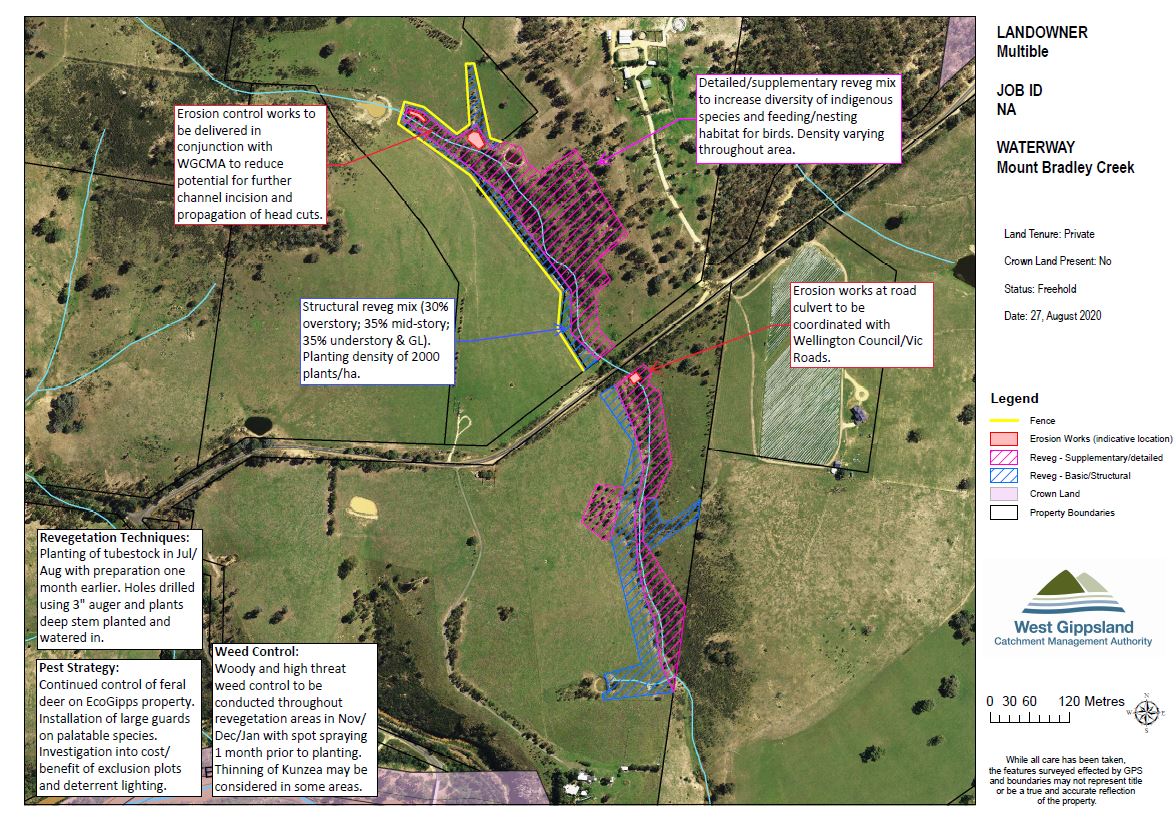EcoGipps is working with West Gippsland Catchment Management Authority (WGCMA) to implement restoration of Mount Bradley Creek.
EcoGipps and WGCMA have completed restoration plans to revive Mount Bradley Creek, with works due to begin in 2021. Working together with neighbouring properties, the activities will include erosion control, revegetation techniques, pest strategy and weed control.

This restorative project aims to reduce further channel and head cut erosion, as well as create an environment for water to be retained in the landscape. The project works will commence with filling some of the eroded cavities with natural materials such as rocks and logs, to ensure no further damage occurs to the vulnerable landscape whilst works are taking place.
The next stage of the works is planting trees, shrubs and ground plants to instigate the restoration of the riverbanks. Through the planting of diverse indigenous vegetation, Mount Bradley Creek will serve as a more dynamic and valuable habitat for mammals, amphibians, reptiles, insects and birds to nest and feed.

The planting is to be scheduled over a 3-5 year period, dependent on seasonal weather. Native seeds indigenous to the area will be sourced and established for planting, which can also be a timely process. WGCMA has developed a mixed planting plan, which will aim to establish 30% overstory, 35% mid-story, 35% understory and ground-level vegetation.
The plan consists of over 40 indigenous plant species, including Gippsland Red Gum, Red Ironbank, White Stringybark, Sweet Bursaria, Shiny Cassinia, Swamp Paperbark, Nodding Blue Lily and Tussock Grass.
Pest control measures will be put in place, such as deer guards for the larger plant species and exclusion plots for the lower shrubs, to prevent plant destruction by rabbits and deer.

The project aims to foster more areas of pondage, as pictured above, whereby water is captured and retained in the landscape. By supporting the Creek to retain water, it is then available all year round for plants and animals. These native plants then offer varied layers of habitat, protection and food source for birds and animals.

